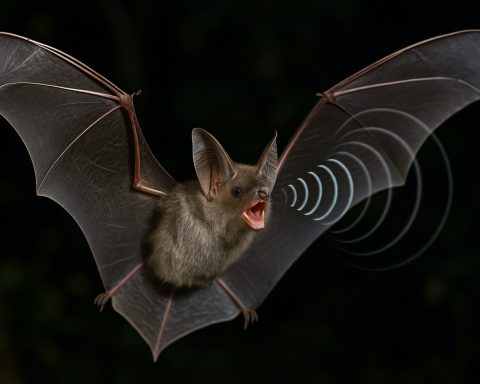- The first advanced F-16C/D Block 70 jets, known as “Vipers,” have been delivered to Taiwan, symbolizing a significant geopolitical shift.
- This delivery enhances Taiwan’s defense capabilities amid increasing tensions with China, showcasing strong U.S.-Taiwan relations.
- The F-16C/D Block 70 features cutting-edge technology, including an engine with 29,000 pounds of thrust and advanced APG-83 radar for superior targeting.
- China views Taiwan as a renegade province and has a vastly larger air force, heightening regional tensions.
- The presence of 66 F-16s by next year is expected to significantly bolster Taiwan’s air defense and sovereignty efforts.
- This development signifies a robust U.S. commitment to Taiwan’s security, amidst complicated U.S.-China relations.
Clouds parted over Greenville, South Carolina, revealing a moment years in the making. Clad in a sleek metallic sheen, the first of the advanced F-16C/D Block 70 fighters—referred to as the “Viper”—has been delivered to Taiwan. Yet, this aircraft is far more than just a marvel of engineering; it symbolizes a complex geopolitical dance on the global stage.
The scene marks a significant step in Taiwan’s ongoing efforts to bolster its defense capabilities against the looming presence of its neighbor, China. As the sun shimmers on the tarmac, the significance of these jets becomes vividly clear. They are not merely instruments of war; they are badges of sovereignty for Taiwan and potent symbols of U.S.-Taiwan relations. This delivery is the result of a series of complex endorsements and agreements that trace back to a commitment made by the United States under the Taiwan Relations Act, a promise to supply “defensive arms” to the island.
Beneath its sleek exterior, the F-16C/D Block 70 boasts power like no other. The aircraft is propelled by an engine generating an astounding 29,000 pounds of thrust, allowing it to dwarf the capacities of previous models. Equipped with the APG-83 radar, the aircraft has unmatched capabilities for all-weather targeting—positioning it as the most advanced fourth-generation fighter ever crafted. In terms of aerial prowess, Lockheed Martin’s creation is a perfect dance partner for the rigors of modern aerial combat.
While the skies seem to reflect Taiwan’s strengthened resolve, the political atmosphere remains complicated. The Chinese Communist Party, which has intensified its military exercises near the island, considers Taiwan a renegade province. With over 3,150 aircraft, including its fifth-generation Chengdu J-20 jets, China’s air force towers over Taiwan’s defenses, raising the stakes for the island nation.
The arrival of these aircraft couldn’t be timelier for Taiwan, which has long faced the shadow of an immense adversary. With all 66 F-16s expected to reach the island by next year, Taiwan’s air force will be better equipped to meet potential challenges head-on, from intercepting adversarial aircraft to maintaining air sovereignty.
In this unfolding geopolitical drama, the F-16C/D Block 70s act not just as deterrents but as reflections of a larger alliance. As the U.S. continues to navigate its diplomatic relationship with China, this delivery reaffirms a robust, unwavering commitment to supporting Taiwan.
The takeaway is clear: in an era of intricate alliances and regional tensions, every fighter jet delivered not only enhances Taiwan’s air power but also acts as a firm declaration of its right to self-determination. And with its powerful new fleet, Taiwan prepares to soar higher and more confidently into a future fraught with uncertainty yet tempered by formidable readiness.
The Unseen Powerplay: What Taiwan’s Advanced F-16 Viper Fighter Jets Mean for Global Politics
Introduction
The recent delivery of the F-16C/D Block 70 fighters, often referred to as “Vipers,” to Taiwan is not just a milestone in aviation technology; it’s a pivotal moment in geopolitics. As Taiwan receives these advanced aircraft against a backdrop of regional tension, let’s delve deeper into the multifaceted implications of this development.
Facts and Features of the F-16C/D Block 70
1. Advanced Avionics and Radar Systems: Equipped with the APG-83 Active Electronically Scanned Array (AESA) radar, the F-16 Block 70 allows for superior situational awareness and targeting capabilities, even in adverse weather.
2. State-of-the-Art Engine: The aircraft is driven by a Pratt & Whitney F110 engine, delivering 29,000 pounds of thrust, enabling speeds of up to Mach 2. This power far exceeds that of earlier generations, enhancing agility and range.
3. Pilot-Friendly Interfaces: The cockpit features an advanced digital flight control computer and an up-to-date pilot-vehicle interface, improving combat efficiency and reducing pilot workload.
4. Enhanced Survivability: Modern electronic warfare systems provide better threat detection and countermeasures, ensuring pilot safety during high-threat missions.
Real-World Use Cases & Strategic Importance
– Air Sovereignty and Defense: The arrival of these jets will empower Taiwan to effectively patrol its airspace, intercept hostile aircraft, and manage air dominance more assertively.
– Training and Readiness: Taiwan’s air force will need to integrate extensive training operations to utilize these high-performance jets fully. This will likely involve collaboration with the U.S. for technology transfer and skill enhancement.
– Geopolitical Deterrence: The presence of advanced F-16s serves as a deterrent, signaling Taiwan’s capability and resolve to defend its sovereignty while illustrating U.S. commitment to its allies.
Pros & Cons Overview
Pros:
– Significant increase in Taiwan’s defensive capabilities.
– Strengthens Taiwan-U.S. relations against rising regional tensions.
– Technologically advanced features make it an unprecedented fourth-generation fighter.
Cons:
– Potential escalation of military tensions with China.
– High operational and maintenance costs.
– Requires significant training and logistics to maximize operational readiness.
Market Forecasts & Industry Trends
– Increasing Demand for Fourth-Generation Fighter Jets: As geopolitical tensions rise globally, nations may seek to enhance their air forces, driving demand for advanced fighters like the F-16 Block 70.
– Shift towards Unmanned Aerial Systems: While such manned aircraft remain important, there’s a growing interest in supplementing air superiority with drones and AI-driven systems for next-gen warfare strategies.
Controversies & Limitations
– Political Controversy: The sale of these jets has drawn criticism from China, which views military support to Taiwan as a violation of sovereignty.
– Capability Limitations: Despite being the most advanced of its kind, the F-16 Block 70 still faces limitations compared to fifth-generation jets like China’s J-20, particularly in stealth capabilities.
Actionable Recommendations
For those looking to better understand the implications of this development:
– Engage in Policy Discussions: Stay informed through webinars and forums focused on Asia-Pacific military relations.
– Monitor Defense News: Follow credible sources for updates on global arms sales and defense technology trends.
– Consider Strategic Implications: Businesses can explore opportunities emerging from increased defense spending in the region, as well as potential repercussions on supply chains.
Conclusion
The delivery of F-16C/D Block 70 fighters to Taiwan is more than a mere arms deal. It’s a statement of strategic intent, both for Taiwan and its allies. As global tensions continue to rise, these “Vipers” symbolize a new era of defense preparedness and a reaffirmation of alliances.
For more information on military technology and global defense news, visit Lockheed Martin and U.S. Department of Defense.







